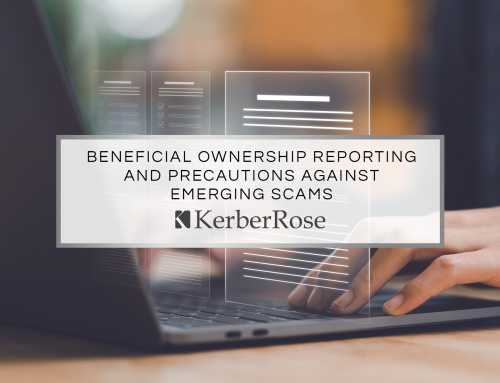Student Loan Debt Cancellation: What You Need to Know
On August 24, President Biden released a plan to deliver on his campaign promise to cancel $10,000 of student loan debt for borrowers with certain income levels.
What are the facts?
The released fact sheet outlines cancellation of up to $10,000 of federal student loans for borrowers making less than $125,000 annually ($250,000 if married) and up to $20,000 for borrowers who received Pell Grants—a type of federal student aid provided to lower-income borrowers which do not have to be repaid.
Student loan forgiveness is available for any government-held federal student loan, including undergraduate federal student loans, graduate federal student loans and Parent PLUS loans which are held by the government.
Many details related to how the cancellation plan will work have yet to be announced. The Biden administration has indicated the Education Department will automatically provide some relief, without borrowers having to take any action. The Education Department has also indicated borrowers who don’t have their information on file will need to complete and submit an application certifying their income.
Is this debt cancellation taxable?
This student loan debt cancellation will not be taxed at the federal level. Typically, debt cancellation is taxed at the taxpayer’s ordinary tax rate; however, thanks to a clause in the American Rescue Plan of 2021, student loan forgiveness is tax-free through 2025. The fact sheet released by the White House confirms this.
As for state treatment of the loan cancellation, Wisconsin along with Arkansas, Hawaii, Idaho, Kentucky, Massachusetts, Minnesota, Mississippi, New York, Pennsylvania, South Carolina, Virginia and West Virginia do not conform to changes under the American Rescue Plan, meaning it is possible any student loan cancellation would still be taxed at that state level, should it occur.
Will this student loan debt cancellation actually occur?
Though the prospect of mass student loan cancellation is more likely than ever, the answer is still uncertain. There already exist several programs to cancel, forgive or discharge student loan debt for targeted groups, such as public sector employees, students attending an instruction which is now closed and teachers working in certain districts. However, a large-scale debt cancellation has not been executed before, and some question whether the President has the legal authority to do so.
Stay tuned as we continue to monitor this initiative. If you have additional questions or would like more information, please reach out to a KerberRose Trusted Advisor.
Student Loan Debt Cancellation: What You Need to Know
On August 24, President Biden released a plan to deliver on his campaign promise to cancel $10,000 of student loan debt for borrowers with certain income levels.
What are the facts?
The released fact sheet outlines cancellation of up to $10,000 of federal student loans for borrowers making less than $125,000 annually ($250,000 if married) and up to $20,000 for borrowers who received Pell Grants—a type of federal student aid provided to lower-income borrowers which do not have to be repaid.
Student loan forgiveness is available for any government-held federal student loan, including undergraduate federal student loans, graduate federal student loans and Parent PLUS loans which are held by the government.
Many details related to how the cancellation plan will work have yet to be announced. The Biden administration has indicated the Education Department will automatically provide some relief, without borrowers having to take any action. The Education Department has also indicated borrowers who don’t have their information on file will need to complete and submit an application certifying their income.
Is this debt cancellation taxable?
This student loan debt cancellation will not be taxed at the federal level. Typically, debt cancellation is taxed at the taxpayer’s ordinary tax rate; however, thanks to a clause in the American Rescue Plan of 2021, student loan forgiveness is tax-free through 2025. The fact sheet released by the White House confirms this.
As for state treatment of the loan cancellation, Wisconsin along with Arkansas, Hawaii, Idaho, Kentucky, Massachusetts, Minnesota, Mississippi, New York, Pennsylvania, South Carolina, Virginia and West Virginia do not conform to changes under the American Rescue Plan, meaning it is possible any student loan cancellation would still be taxed at that state level, should it occur.
Will this student loan debt cancellation actually occur?
Though the prospect of mass student loan cancellation is more likely than ever, the answer is still uncertain. There already exist several programs to cancel, forgive or discharge student loan debt for targeted groups, such as public sector employees, students attending an instruction which is now closed and teachers working in certain districts. However, a large-scale debt cancellation has not been executed before, and some question whether the President has the legal authority to do so.
Stay tuned as we continue to monitor this initiative. If you have additional questions or would like more information, please reach out to a KerberRose Trusted Advisor.
Student Loan Debt Cancellation: What You Need to Know
On August 24, President Biden released a plan to deliver on his campaign promise to cancel $10,000 of student loan debt for borrowers with certain income levels.
What are the facts?
The released fact sheet outlines cancellation of up to $10,000 of federal student loans for borrowers making less than $125,000 annually ($250,000 if married) and up to $20,000 for borrowers who received Pell Grants—a type of federal student aid provided to lower-income borrowers which do not have to be repaid.
Student loan forgiveness is available for any government-held federal student loan, including undergraduate federal student loans, graduate federal student loans and Parent PLUS loans which are held by the government.
Many details related to how the cancellation plan will work have yet to be announced. The Biden administration has indicated the Education Department will automatically provide some relief, without borrowers having to take any action. The Education Department has also indicated borrowers who don’t have their information on file will need to complete and submit an application certifying their income.
Is this debt cancellation taxable?
This student loan debt cancellation will not be taxed at the federal level. Typically, debt cancellation is taxed at the taxpayer’s ordinary tax rate; however, thanks to a clause in the American Rescue Plan of 2021, student loan forgiveness is tax-free through 2025. The fact sheet released by the White House confirms this.
As for state treatment of the loan cancellation, Wisconsin along with Arkansas, Hawaii, Idaho, Kentucky, Massachusetts, Minnesota, Mississippi, New York, Pennsylvania, South Carolina, Virginia and West Virginia do not conform to changes under the American Rescue Plan, meaning it is possible any student loan cancellation would still be taxed at that state level, should it occur.
Will this student loan debt cancellation actually occur?
Though the prospect of mass student loan cancellation is more likely than ever, the answer is still uncertain. There already exist several programs to cancel, forgive or discharge student loan debt for targeted groups, such as public sector employees, students attending an instruction which is now closed and teachers working in certain districts. However, a large-scale debt cancellation has not been executed before, and some question whether the President has the legal authority to do so.
Stay tuned as we continue to monitor this initiative. If you have additional questions or would like more information, please reach out to a KerberRose Trusted Advisor.




